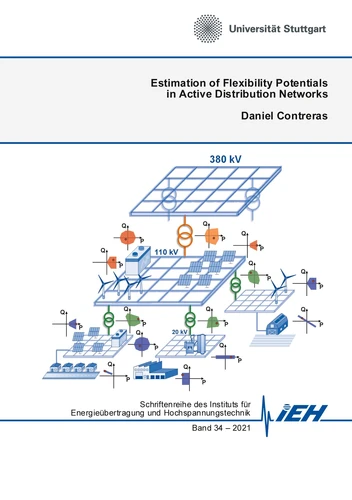Estimation of Flexibility Potentials in Active Distribution Networks
Par :Formats :
Disponible dans votre compte client Decitre ou Furet du Nord dès validation de votre commande. Le format PDF est :
- Compatible avec une lecture sur My Vivlio (smartphone, tablette, ordinateur)
- Compatible avec une lecture sur liseuses Vivlio
- Pour les liseuses autres que Vivlio, vous devez utiliser le logiciel Adobe Digital Edition. Non compatible avec la lecture sur les liseuses Kindle, Remarkable et Sony
 , qui est-ce ?
, qui est-ce ?Notre partenaire de plateforme de lecture numérique où vous retrouverez l'ensemble de vos ebooks gratuitement
Pour en savoir plus sur nos ebooks, consultez notre aide en ligne ici
- Nombre de pages164
- FormatPDF
- ISBN978-3-7557-1825-3
- EAN9783755718253
- Date de parution09/11/2021
- Protection num.Digital Watermarking
- Taille57 Mo
- Infos supplémentairespdf
- ÉditeurA PRECISER
Résumé
The feasible operation region (FOR) allows capturing the aggregated flexibility potential of DER within radial distribution networks, while respecting the technical restrictions of both plants and grid. This thesis proposes a novel approach to compute the FOR, the Linear Flexibility Aggregation (LFA) method, based on the solution of a sequence of linear OPF. With the objective of reducing the computation time, without compromising the accuracy of the assessed FOR.
It is shown that the proposed method provides a considerable reduction in processing time compared to similar methods, e.g. Monte-Carlo simulations or non-linear OPF-based methods.
It is shown that the proposed method provides a considerable reduction in processing time compared to similar methods, e.g. Monte-Carlo simulations or non-linear OPF-based methods.
The feasible operation region (FOR) allows capturing the aggregated flexibility potential of DER within radial distribution networks, while respecting the technical restrictions of both plants and grid. This thesis proposes a novel approach to compute the FOR, the Linear Flexibility Aggregation (LFA) method, based on the solution of a sequence of linear OPF. With the objective of reducing the computation time, without compromising the accuracy of the assessed FOR.
It is shown that the proposed method provides a considerable reduction in processing time compared to similar methods, e.g. Monte-Carlo simulations or non-linear OPF-based methods.
It is shown that the proposed method provides a considerable reduction in processing time compared to similar methods, e.g. Monte-Carlo simulations or non-linear OPF-based methods.



